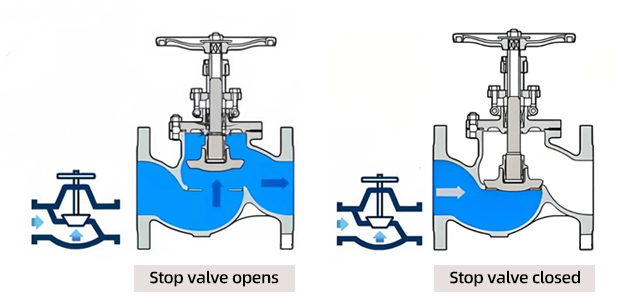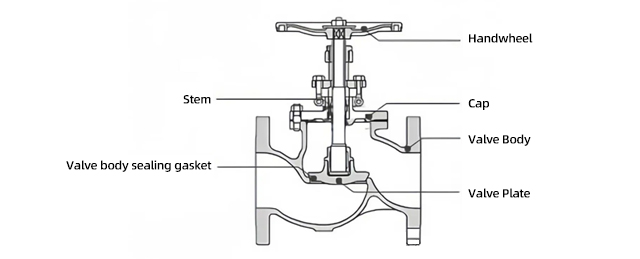- Gate valve
-
- DN1000 Extension stem double flange soft seal gate valveDIN F4 resilient seated gate valveDN450-1200 Resilient Seated Gate ValveDIN F5 resilient seated gate valveSocket connection soft seal gate valveUnderground cap soft seal gate valveBS5163 rising stem soft seal gate valveHard seal gate valveAPI slab Gate ValveStainless steel flange gate valveWafer knife gate valvePneumatic gate valveSoft seal gate valveExtension stem gate valveUL/FM fire protection groove ends gate valveRising stem forged steel gate valvecarbon steel gate valveStainless steel threaded gate valveDIN soft seal gate valveANSI soft sealing gate valve 200PSICast iron gate valveBS resilient seated gate valve
- Butterfly valve
-
- DN900 pneumatic triple eccentric hard seal butterfly valveD643H Triple Eccentric Butterfly ValveD343H Hard seal butterfly valveMulti standard EPDM seated butterfly valveSingle flange butterfly valveDN2000 Double eccentric butterfly valveFlange butterfly valveLug butterfly valveWafer butterfly valve with handleWorm gear operated butterfly valveWafer lined fluorine butterfly valveStainless steel wafer butterfly valveStainless steel flanged butterfly valveThree eccentric flange butterfly valvePneumatic flanged butterfly valvePneumatic wafer butterfly valveTriple eccentric butterfly valve wafer typeWafer butterfly valve ULC approvedInflatable seat butterfly valveHigh performance butterfly valveGrooved end butterfly valveElectric soft seal butterfly valveFlange fluorine lined butterfly valveHandle aluminum butterfly valveWorm Gear Aluminum Butterfly ValveFull PTFE lined butterfly valve wafer typeOne stem no-pin wafer butterfly valveMulti standard aluminum stem butterfly valveStainless Steel wafer Butterfly ValveAluminium handle operated lug butterfly valveLever Operated Flange Butterfly ValveButterfly valve stemButterfly valve discButterfly valve seat
- Ball valve
-
- DN1400 top-mounted eccentric semi-ball valveFlanged three-way ball valveFully welded ball valveNatural gas ball valveHigh platform flange ball valve1 PC ball valveFixed ball valvePTFE seat flanged ball valveMetal seat ball valveAPI 6D ball valve3 Piece ball valveFull Bore 3 way ball valve L-Port3 Way T-Port ball valve2PC Ball valve female thread stainless steel
- Globe Valve
-
- API Carbon Steel Globe ValveBellows Globe ValveStainless steel flange globe valveStainless steel thread S type globe valveStainless steel thread B type globe valveCast Steel Globe ValvePiston Globe ValveWCB Carbon Steel Globe Check Valveelectric motorized control stainless steel SS316 globe valveBrass Globe ValveCryogenic Globe valveHT200 Globe ValveThreaded Stainless Steel Globe ValveGG25 Globe ValveANSI API Cast Steel And Stainless Steel Globe valve
- Check valve
-
- Rubber seal check valveDN800 Slow closing check valveDN800 Rubber Disc Check ValveButterfly Buffering Check Valvecheck valve with counter weightSilent Check ValveWCB Swing check valveSwing Check ValveSingle Chip Check Valve H74WStainless Steel Wafer Check ValveSwing Start Check ValveFoot check valveAPI Swing Check ValveDIN Flange check valveSingle plate check valveLifting Check ValveBottom ValveHammer Diminish Noises Check ValveWafer Check ValveWafer dual plate check valve
- Control valve
-
- Static Balancing ValveCage Guided Sleeve Globe Control ValveDN1000 Piston Flow Regulating ValveDN1600 Electric Actuator Flow Regulating ValvePneumatic Flanged Butterfly ValvePneumatic Wafer Butterfly ValveAngle Seat ValvePneumatic gate valveElectric three-way control valveElectric sleeve control valve
- Water Meter
-
- Vertical Type Water MetersStainless steel threaded water meterPiston water meterPlastic water meterMore flow rotor dry water meterspiral vane flange water meterCI wotlman water meter with pulse outputLXCLG(R) Vertical removable element woltman cold (hot) water meterSingle flow rotor dry water meterPrepaid Token Water MeterElectromagnetic flowmeterRotary Piston Liquid Sealed Water MeterRotary Piston Liquid Sealed Water Meter
- Air valve
-
- Double ball exhaust valveDoubleair Air Valve SaudiDoubleair Air Valve Southeast AsiaDoubleair Air Valve South AmericaDouble Air ValveThreaded Air ValveSingle Air ValveTriple Functions Air ValveAutomatic Air Release ValveAutomatic release valveAutomatic exhaust valveComposite Exhaust Air ValveBrass exhaust valveDouble Ball Air Valve
- Pipe Repair & Coupling
-
- Flexible Multi-Function Pipe Coupling ZFJ-SSS Semi-Circle Pipe Repair Clamp SJW-HDuctile Iron Band Repair ClampStainless Steel Band Repair ClampDouble-Section Pipe Repair CouplingFolding Type Pipe RepairSingle-Section Multi-Function Pipe Coupling MF-SGear-Ring Type Multi-Function Pipe Coupling GR-SZBW Damping Corrugated Hose
- Dismantling Joint
-
- VSSJAFC(CC2F) Detachable Flange Transmission JointVSSJA-2(B2F) Double Flange Limited Expansion JointVSSJA-1(BF) Single Flange Limited Expansion JointVSSJA(AF) Flange Loose Expansion JointJGD-B Threaded Rubber JointZBW Damping Corrugated HoseKXT-S Flexible Dual-Spherical Rubber JointKXT Rubber Soft JointFlange Adaptor
The globe valve is installed backwards, the consequences are so serious!
The working principle of the globe valve:
The working principle of the globe valve is to control the flow of fluid by relying on the movement of the valve disc on the valve seat. The valve disc moves linearly along the centerline of the valve seat, changing the distance between the valve disc and the valve seat, thereby changing the cross-sectional area of the flow channel, thereby controlling and cutting off the flow. Globe valves are suitable for a variety of occasions, including controlling air, water, steam, various corrosive media, mud, oil, liquid metal and radioactive media, etc.
Globe valve flow direction:
The closing principle of the globe valve is to rely on the pressure of the valve rod to make the valve disc sealing surface and the valve seat sealing surface closely fit to prevent the flow of media. The flow direction of the globe valve is always from top to bottom, so it is directional during installation. The structure length of the globe valve is larger than that of the gate valve. At the same time, the fluid resistance is large, and the sealing reliability is not strong during long-term operation.
The structure of the globe valve:
Valve body:
The main part of the globe valve, usually made of cast iron, ductile iron, cast steel or stainless steel. There is a flow channel inside the valve body for the passage of fluid.
Disc:
The key component of the stop valve, used to control the flow of fluid. The valve disc usually adopts a double-plane hard seal or soft seal structure and is made of metal (such as cast iron, copper, aluminum, stainless steel, etc.), which can effectively prevent fluid leakage.
Valve stem:
The component that connects the valve disc to an actuator such as a handwheel or motor. By rotating the valve stem, the valve disc is driven to open or close.
Seals:
Including gaskets, packings, etc., used for sealing between valve body, valve disc, valve stem and other components, usually made of rubber, polytetrafluoroethylene and other materials.
Actuator:
The component that controls the opening or closing of the valve, including handwheels, electric motors, pneumatic devices, etc.
Advantages and Disadvantages of Globe Valve:
Advantages of globe valve:
1. The stop valve has a simple structure and is relatively convenient to manufacture and maintain.
2. The stop valve has a small working stroke and short opening and closing time.
3. The stop valve has good sealing performance, small friction between sealing surfaces and long service life.
Disadvantages of globe valve:
1. The stop valve has large fluid resistance and requires a large force to open and close.
2. The stop valve is not suitable for media with particles, high viscosity, and easy coking.
3. The regulating performance of the stop valve is poor.
Precautions for globe valves:
1. The globe valve operated by hand wheel and handle can be installed at any position in the pipeline.
2. The hand wheel, handle and inching mechanism are not allowed to be used for lifting.
3. The flow direction of the medium should be consistent with the direction of the arrow shown on the valve body.
4. When opening and closing the stop valve, the force should be steady and not impacted. Some components of high-pressure stop valves that impact opening and closing have considered that this impact force cannot be the same as that of general stop valves.
5. When the stop valve is fully open, the hand wheel should be turned slightly to make the threads tight to avoid loosening and damage.
6. When the pipeline is first used, there is a lot of dirt inside. You can slightly open the stop valve, use the high-speed flow of the medium to wash away it, and then close it gently (do not close quickly or slam it to prevent residual impurities from pinching the seal. (face), turn it on again, repeat this many times, rinse away the dirt, and then resume normal work. For normally open stop valves, there may be dirt stuck on the sealing surface. When closing, use the above method to flush it clean, and then officially close it tightly.
7. If the handwheel or handle is damaged or lost, it should be replaced immediately. Do not use a swing wrench to replace it, so as to avoid damage to the four sides of the valve stem, failure to open and close properly, and even an accident in production.
8. Some media will cool down after the stop valve is closed, causing the valve parts to shrink. The operator should close it again at the appropriate time so that no slits are left on the sealing surface. Otherwise, the medium will flow through the slits at high speed and it will be easily flushed. Corrosion of sealing surface.
9. During operation, if you find that the operation is too strenuous, you should analyze the reasons. If the packing is too tight, loosen it appropriately. If the valve stem is skewed, notify personnel to repair it. When some stop valves are closed, the closing parts are heated and expand, making it difficult to open. If it must be opened at this time, loosen the valve cover thread by half a turn to one turn to eliminate the stress on the valve stem, and then turn the hand wheel.
10. The selection of stop valves should vary according to the use area. For example, the high-pressure system of thermal power plants or nuclear power plants should choose balance or plunger type stop valves, while synthetic production can choose 32MPa high-pressure stop valves. At the same time, ensure that all valve parts, such as flanges and bracket bolts, are intact to avoid loosening.
Installation points of globe valve:
Installation direction:
The globe valve should be installed according to the direction of fluid flow, ensuring that the valve body is low and high, so that the valve can be opened with less effort and the packing will not leak easily.
Installation location:
The globe valve should be installed in a place that is easy to operate and maintain, and should be protected from exposure to strong sunlight or high-temperature heat sources. You can choose to install it above the pipeline, at a turn, at a joint, or at a location with an inlet or outlet, so that the pipeline can be easily closed when needed.
Installation space:
Sufficient operating space should be reserved during installation to facilitate operation and maintenance.
Sealing requirements:
The stop valve must be able to completely cut off the flow of media and achieve a tight seal when working. When the valve is closed, the sealing surfaces should be in close contact without air or water leakage.
Inspection and maintenance:
Before installation, the stop valve must be comprehensively inspected and relevant records must be kept, including size, quality, etc. After installation, it should be inspected regularly, check the sealing surface, valve stem condition, etc., and replace it in time if any problems are found.
Storage and care:
The valve should be placed in a ventilated and dry place, with both sides blocked, and the surface painted with anti-rust oil to prevent rust. The label on the valve stem should be complete and clear, and the lead seal and cap should be complete.









